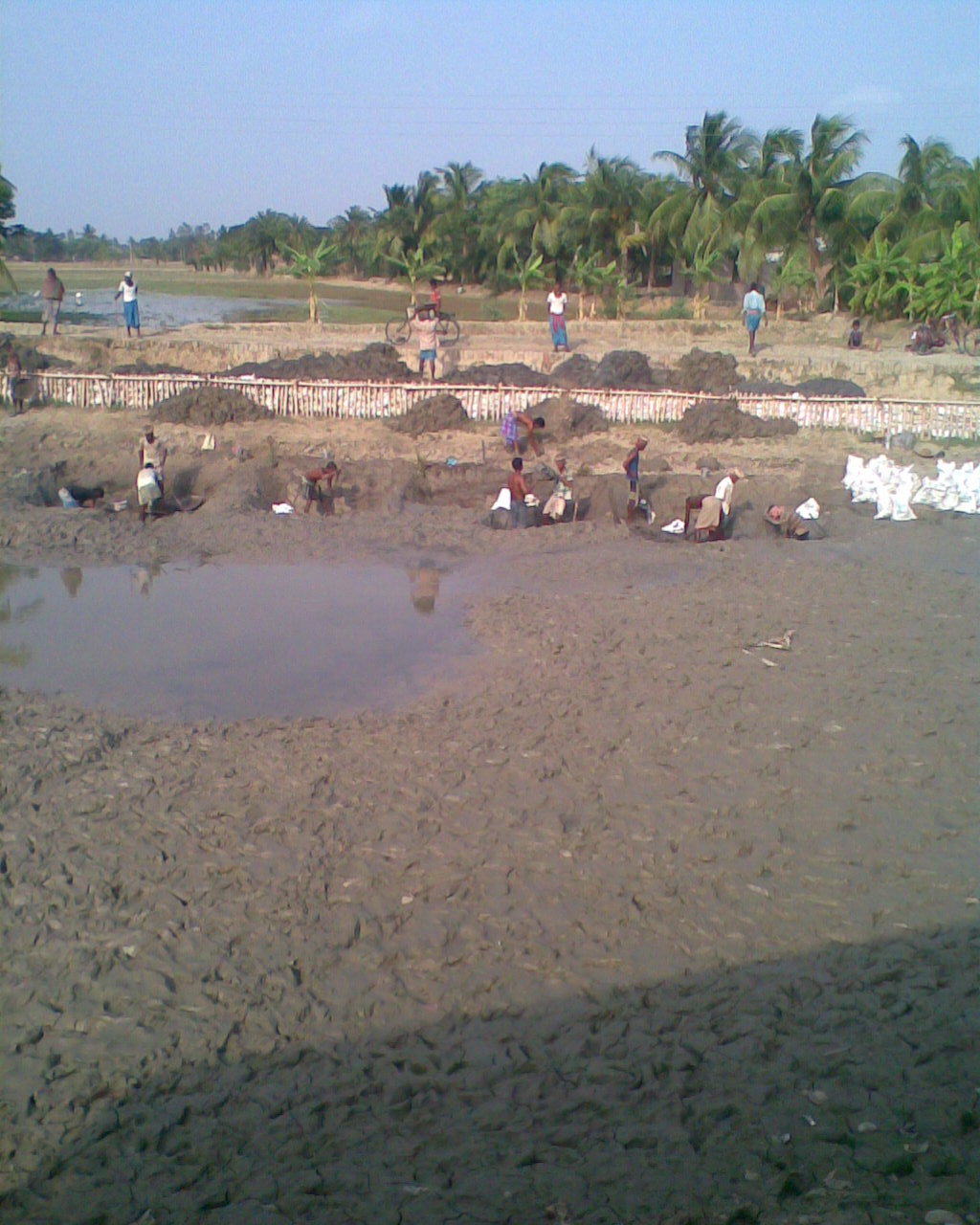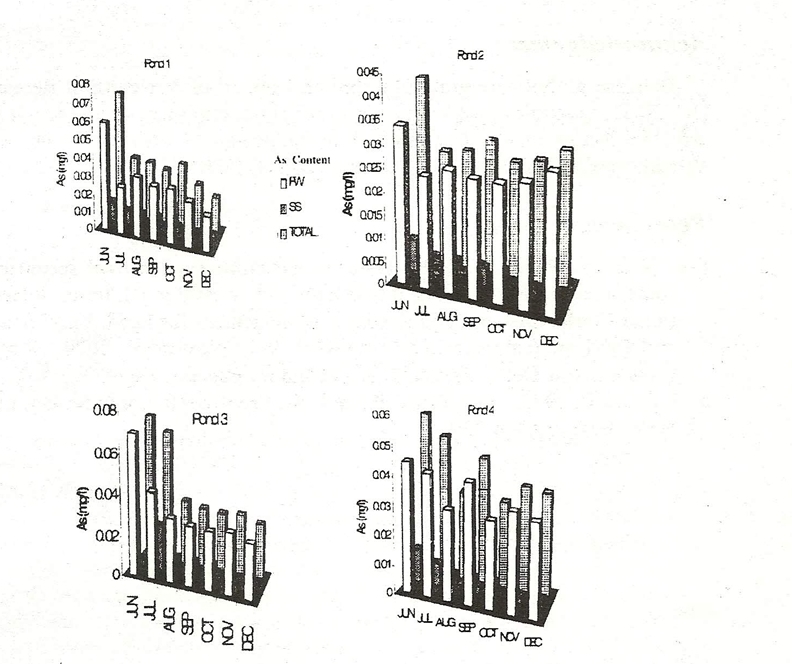
An inventory survey (1998-2000) was conducted on land and water use pattern in Gotera mauza under new alluvial zone of the Gangetic delta in West Bengal. The survey revealed that ponds were continuously filled with arsenic contaminated groundwater through peoples’ practice of filling the ponds with Tubewell water in non-rainy periods mainly during pre-monsoon (April – May) and even in monsoon (June – September) periods for keeping in storage some water in ponds to supply irrigation water for both boro (summer) and kharif (winter) rice crops, fearing shallow tubewells (STW) and deep tubewells (DTW) may fail at the crucial time of water requirements of that crop.
Though that survey was done more than a decade ago, it had revealed a unique natural phenomenon of dearsenification of contaminated groundwater through its storage in surface ponds.

Chemical analysis of arsenic contaminated pond water of fifteen sample ponds had revealed that suspended solids in pond water always contributed to the total arsenic content of pond water and that contribution was always highest during pre-monsoon to post-monsoon (early April to late September).
Those suspended solids after flocculation would be sedimented at the bottom of the ponds and, thus, through such sedimentation process the pond water would be further dearsenified and thereby through storage in ponds arsenic content got reduced. Such studies need location-specific need-based application.
Such unique findings on dearsenification may be further elaborated for conversion of polluted water through directing its murky flow in batteries of sedimentation pond and channels with the inclusion of sand filters, if necessary, for obtaining successively clear water with the creation of provision for secondary use of separated polluted sediments.
Reference:
Panda, S. and Das, N. C. (2002). Seasonal fluctuation in arsenic content in groundwater and pond water. In: Basu, S. (Ed.) (2002). Changing Environmental Scenario of the Indian Subcontinent. acb publications, Kolkata. ISBN 81-87500-09-3 (HB), ISBN 81-87500-08-5 (PB). pp. 415 – 420.
More at:
